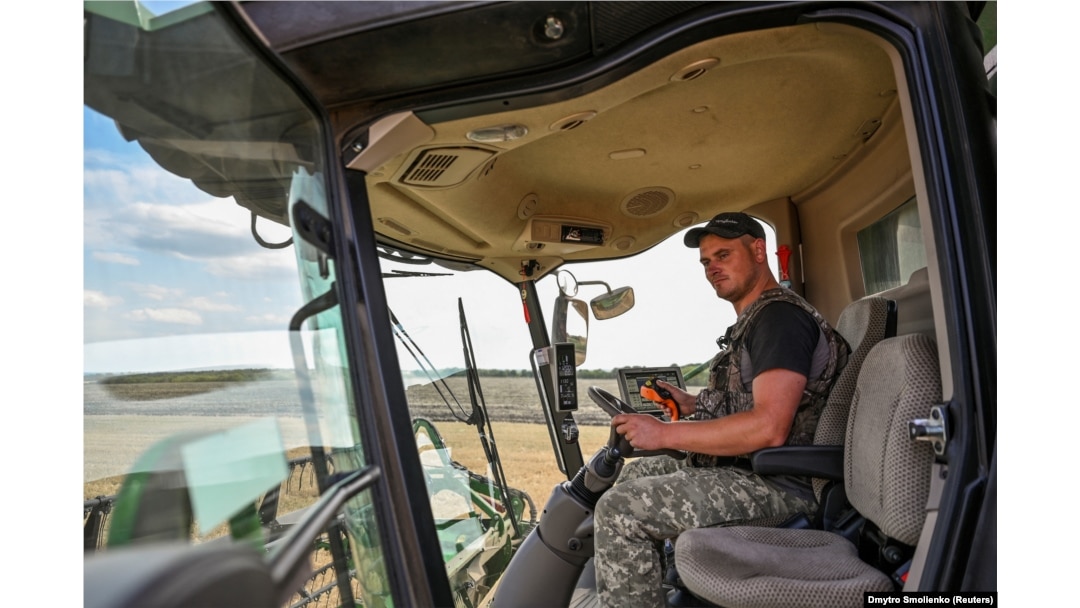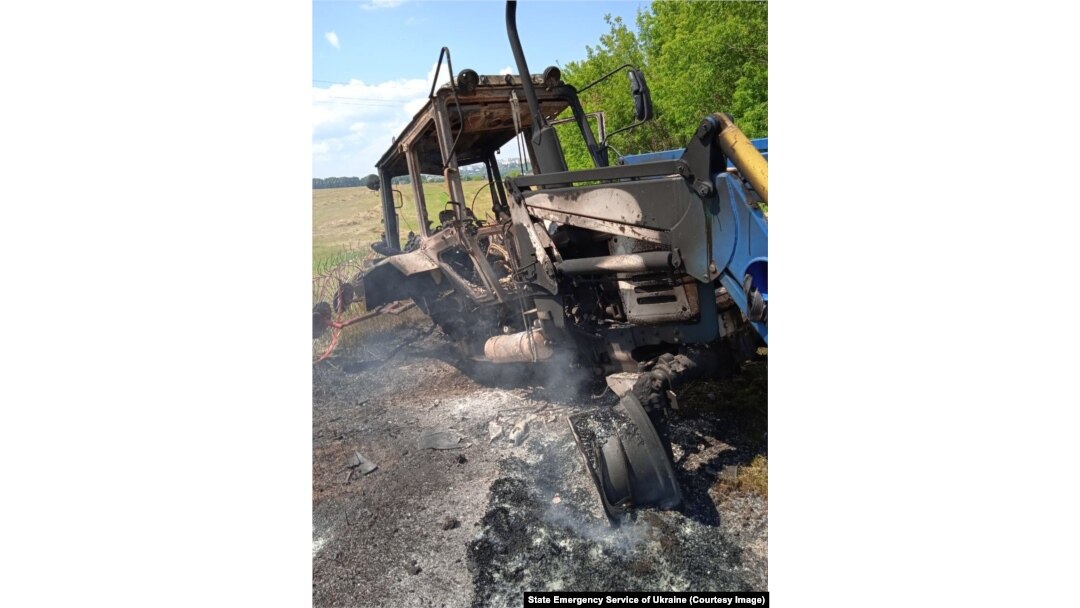
A farm worker in Ukraine’s Zaporizhzhya region wears a flak jacket as he drives a combine harvester on July 29.
Reaping crops in Ukraine has become a highly risky task since the Russian invasion.

This July 30 image shows a combine harvester that was destroyed after hitting an anti-tank mine in the Kharkiv region. According to Ukrainian authorities, the driver of the vehicle was hospitalized but survived the explosion.

The operator of the tractor above, which hit an unknown explosive device on the outskirts of Kharkiv on July 24, was killed instantly. Such tragedies are likely to be repeated in Ukraine’s rural areas as the harvest gets under way and desperately needed food supplies begin to be shipped out of Ukrainian ports.
A sapper checks a wheat field in the Chernihiv region for explosives on July 29.
On August 1, the first shipment of grain using a Turkish and UN-brokered “corridor” for vessels transporting food supplies out of Ukraine's Black Sea ports departed Odesa. The port was previously inaccessible due to Russian naval vessels in the Black Sea.
A combine harvester loads a truck with freshly processed wheat near Kharkiv on July 30.
Despite welcome news of the grain corridor being opened on the Black Sea, Ukrainian President Volodymyr Zelenskiy warned that Ukraine’s harvest may be half the normal volume this year.
A truck loaded with wheat drives past the tail section of a rocket embedded in a field in the Kharkiv region on July 30.
Some farmland in Ukraine has been rendered too dangerous for agricultural work as a result of mines and unexploded ordnance.
Swathes of tinder-dry Ukrainian farmland have also been destroyed by fires sparked by artillery and rocket fire. This July 29 photo shows Ukrainian photojournalist Evgeniy Maloletka in a burning wheat field in the Kharkiv region.
A Russian military vehicle on a field being harvested in Ukraine's Kherson region on July 21.
Other grain fields have been captured by advancing Russian troops or are caught in the deadly no-man's-land between opposing forces.
A truckload of grain being poured into a storage shed in the Zaporizhzhya region on July 29.
In a July interview with CNN, a Ukrainian farmer called Mykhaylo Lyubchenko described agriculture as a "second front" in the war with Russia.
A combine harvester cutting through a wheat field in the Dnipropetrovsk region on July 30.
Lyubchenko vowed that in order to feed both his own country and the rest of the world, he would keep working through the dangerous new reality.


